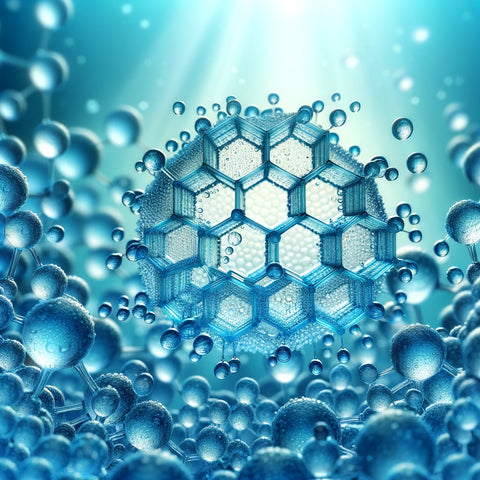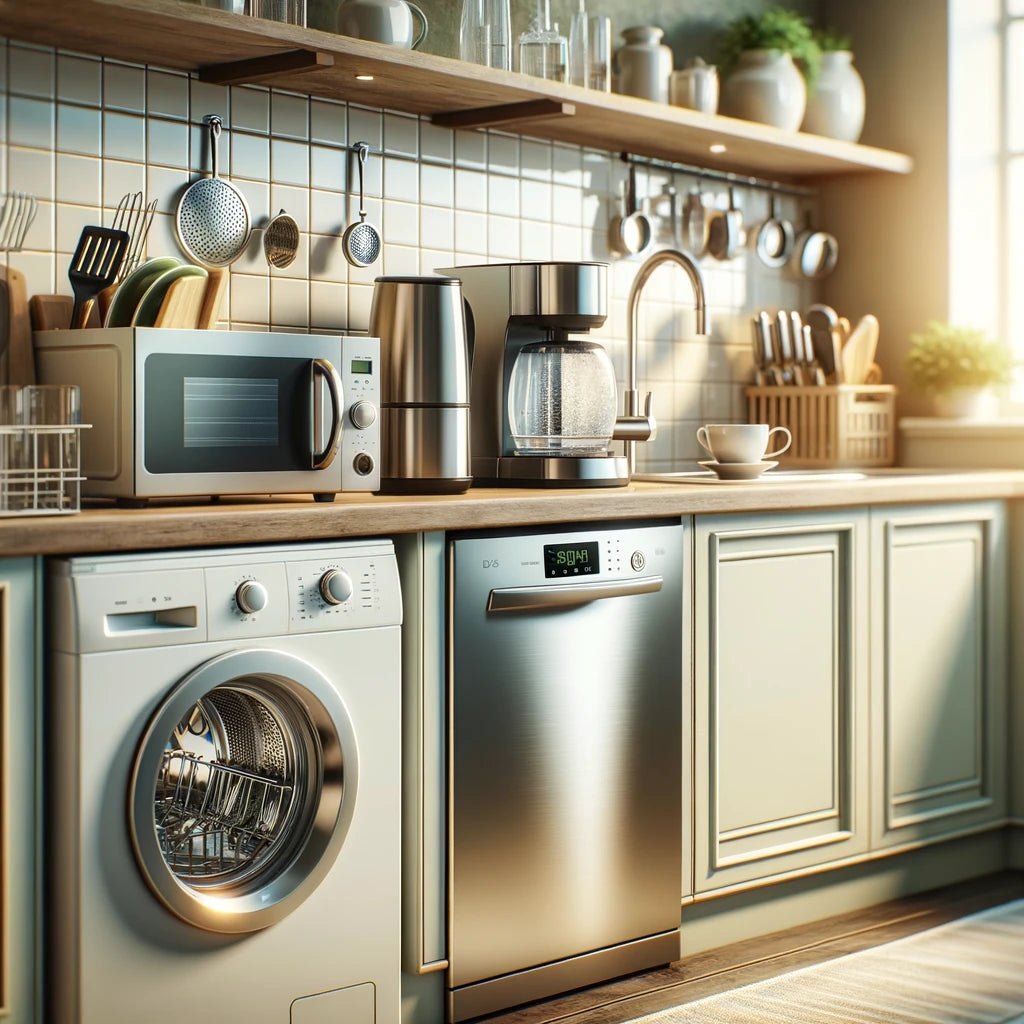Introduction: Hard water is a common problem in many households and can have a significant impact on household appliances. From washing machines to coffee makers to kettles, limescale buildup can shorten the lifespan of these appliances and reduce their efficiency. In this article you will learn how hard water affects your household machines and what effective measures you can take to protect your devices and extend their lifespan.
1. Introduction to the problem of hard water
Hard water is a ubiquitous phenomenon that is more than just a nuisance in many households. It is the cause of a variety of problems ranging from unsightly limescale stains on faucets and dishes to more serious long-term damage to household appliances. The presence of limescale in water, caused by high concentrations of calcium and magnesium ions, results in what is commonly referred to as hard water. This hardness is not only noticeable on the skin and hair when showering, but also has a negative impact on the efficiency and lifespan of washing machines, coffee machines, kettles and other devices that regularly come into contact with water.
The effects of hard water are noticeable in both the private and commercial sectors, as the maintenance and premature replacement of household machines can cause significant costs. In addition, removing limescale deposits requires additional effort and the use of cleaning products, which is both environmentally damaging and costly in the long term.
In this article, we examine the specific challenges that hard water poses to household appliances and highlight effective strategies and solutions to address them. From simple household tips to advanced water treatment technologies, we'll share several methods to extend the life of your equipment and improve the quality of your water. We pay particular attention to innovative approaches such as the solutions offered by
2. Detection of limescale deposits in household machines
The presence of limescale in your household water may be invisible at first, but its effects on your household appliances are far from being. Limescale deposits often appear gradually and only become noticeable when the efficiency of the devices noticeably decreases or visible traces are left behind. To avoid long-term damage, it is crucial to recognize the signs early.
Typical signs of limescale deposits:
-
Decreased water flow rate: One of the first signs of limescale deposits is a decrease in water pressure in shower heads, faucets or dishwashers.
-
Increased energy consumption: Household appliances such as kettles and coffee machines require more time and energy to heat water because limescale forms an insulating layer, making heat transfer more difficult.
-
Malfunctions and failures: Washing machines, dishwashers and other appliances may be more prone to malfunctions or failures due to limescale buildup in pipes and nozzles.
-
Visible limescale stains: White, chalky deposits are often visible on heating elements, inside kettles and on glassware after washing.
Which household appliances are most affected? Practically any appliance that regularly comes into contact with water can be affected by limescale deposits. However, the following are particularly vulnerable:
-
Kettles and coffee machines: These devices are particularly susceptible to limescale deposits due to their direct contact with hot water.
-
Washing machines and dishwashers: They use large amounts of water and are therefore at high risk, especially in areas with hard water.
-
Boilers and water heaters: Limescale can significantly reduce the efficiency of these devices and lead to premature wear.
Early detection and treatment of limescale deposits can significantly extend the lifespan and efficiency of your household appliances. In the following section, we will discuss various methods to prevent and remove limescale to best protect your devices.

3. Methods for preventing and removing limescale
After identifying the signs of limescale deposits in household appliances, the next step is to take effective measures to minimize and eliminate these deposits. There are various approaches, from simple home remedies to technological solutions, that can help protect and extend the life of your devices.
Water Softening Systems: Pros and Cons A long-term solution to combat hard water is to install a water softening system. These systems remove calcium and magnesium ions from the water, the main causes of limescale, and replace them with sodium ions. Although effective, water softeners can be expensive to purchase and maintain, and they require regular replacement of salt tablets.
Home remedies for limescale deposits Various home remedies are available for a more cost-effective alternative:
- Vinegar and citric acid: These natural acids can help dissolve limescale deposits. A mixture of water and vinegar or lemon juice can be used to clean affected areas or run through appliances such as kettles and coffee makers to remove limescale.
- Fabric softener in the wash cycle: Adding fabric softener to the wash cycle can help reduce limescale deposits in washing machines.
Maintenance tips for household machines Regular maintenance and cleaning are crucial to minimize limescale deposits:
- Regular descaling: Carry out regular descaling cycles using special descaling agents or home remedies.
- Cleaning strainers and filters: Regularly check and clean strainers and filters in dishwashers, washing machines and other appliances to prevent deposits.
Innovative solutions for water treatment In addition to traditional methods, there are innovative technologies, such as the products offered by
By combining these methods, you can effectively combat limescale deposits and thus extend the life of your household appliances. In the next section we will look at long-term solutions and their benefits.
4. Long-term solutions for hard water
While short-term measures and regular maintenance are essential to minimizing the effects of limescale, long-term solutions offer lasting improvements to the water quality in your home. These investments can not only extend the life of your home appliances, but also improve your overall well-being.
Installing a water softener One of the long-term solutions is to install a central water softening system. By removing the minerals that cause water to be hard, a water softener prevents limescale from forming. Modern water softeners offer various technologies, from ion exchange based systems that neutralize the minerals without significantly changing the composition of the water. However, the costs are significant and the use of salt raises additional questions
Regular maintenance and cleaning of household appliances The effectiveness of long-term solutions is maximized by regular maintenance and cleaning of your household appliances. This includes periodic descaling of devices such as coffee machines and kettles as well as cleaning filters and supply lines in washing machines and dishwashers. These routines ensure that your appliances function optimally and remain free of limescale deposits.
Use of filter technologies In addition to softening all household water, selective filter solutions can be installed at specific extraction points such as kitchen or bathroom taps. Such filters can help reduce limescale and other contaminants at the source, which is particularly useful if you use the water for cooking or drinking.
Innovative water treatment methods Technologies such as hexagonal water structuring, offered by companies such as
While long-term solutions require an initial investment, the benefits - from lower operating costs for home appliances to improved overall water quality - can significantly outweigh these costs over time. By choosing the right solution for your household, you can not only effectively combat limescale deposits, but also make a positive contribution to the environment and your health.
5. Conclusion: Importance of limescale prevention for the service life of household machines
The discussion about hard water and its effects on household machines clearly shows how important a proactive approach to water treatment and limescale prevention is. Limescale deposits can not only affect the efficiency and functionality of household appliances, but can also lead to premature wear and increased operating costs. Investing in preventive measures and long-term solutions for water softening not only pays off in terms of the lifespan of the devices, but also contributes to overall higher water quality in the household.
Summary of key findings:
-
Early detection: The timely identification of limescale deposits and their signs is crucial to avoid long-term damage to household appliances.
-
Effective prevention measures: Both simple home remedies and specialized descaling solutions can help minimize the formation of limescale deposits.
-
Long-term solutions: Installing a water softening system or using innovative water treatment technologies such as hexagonal water structuring provide long-lasting protection against limescale.
-
Regular Maintenance: Care and regular maintenance of household machines are essential to maximize their lifespan and maintain efficiency.
Ultimately, choosing the appropriate limescale prevention and water treatment strategy is an individual decision based on the specific needs and circumstances of your household. However, by considering the insights and solutions presented here, you can make an informed decision that will not only protect your home appliances, but also contribute to overall better water quality and a healthier living environment.
The Omnino aqua solution
The innovative technology from

In addition to protecting against limescale deposits, using
Investing in technologies like those from

